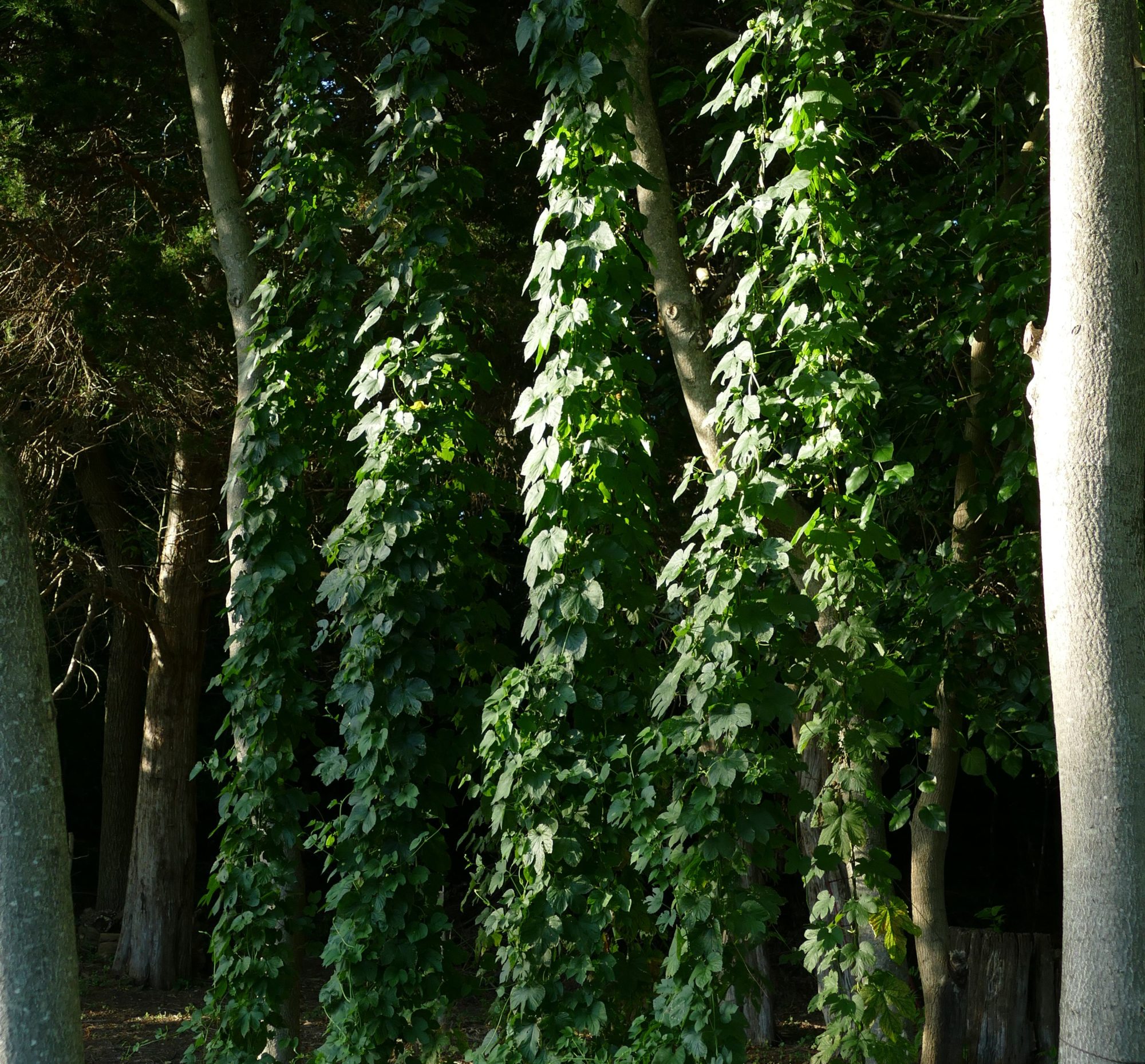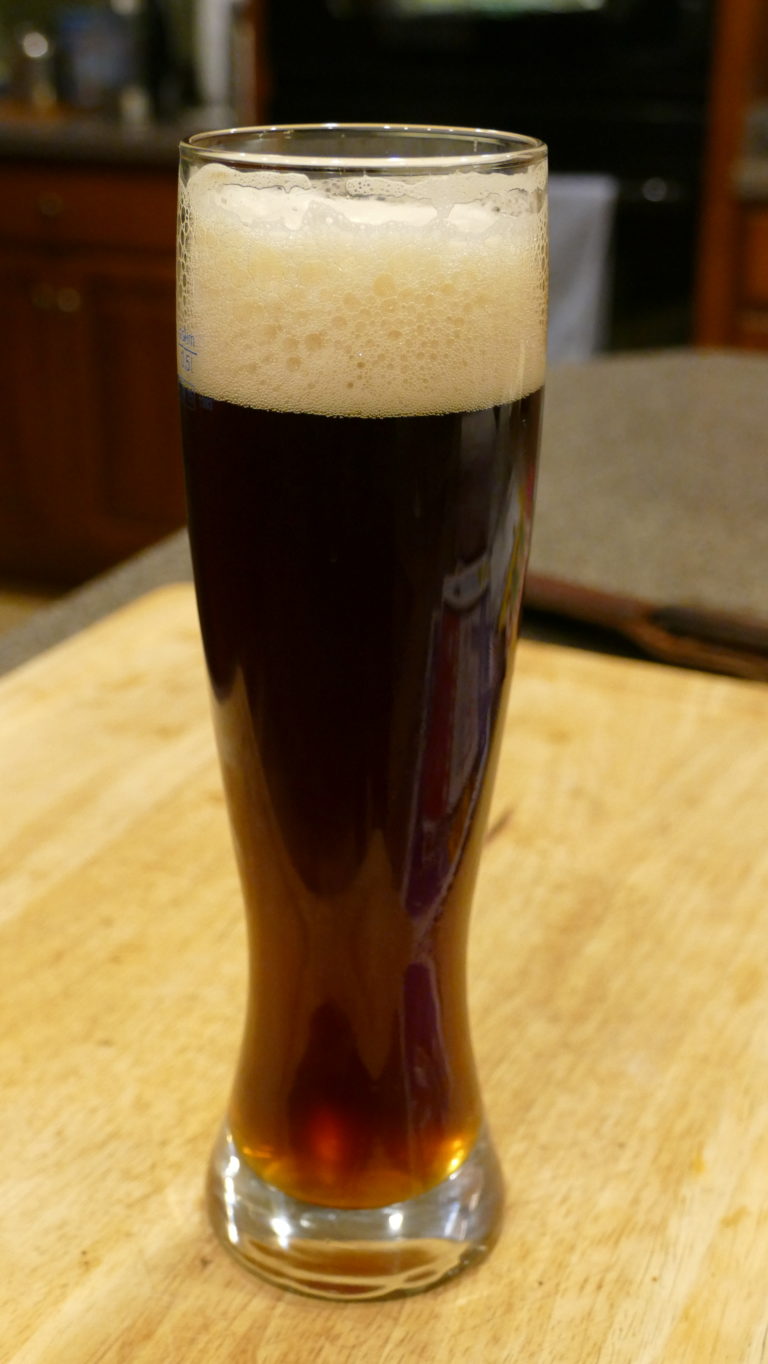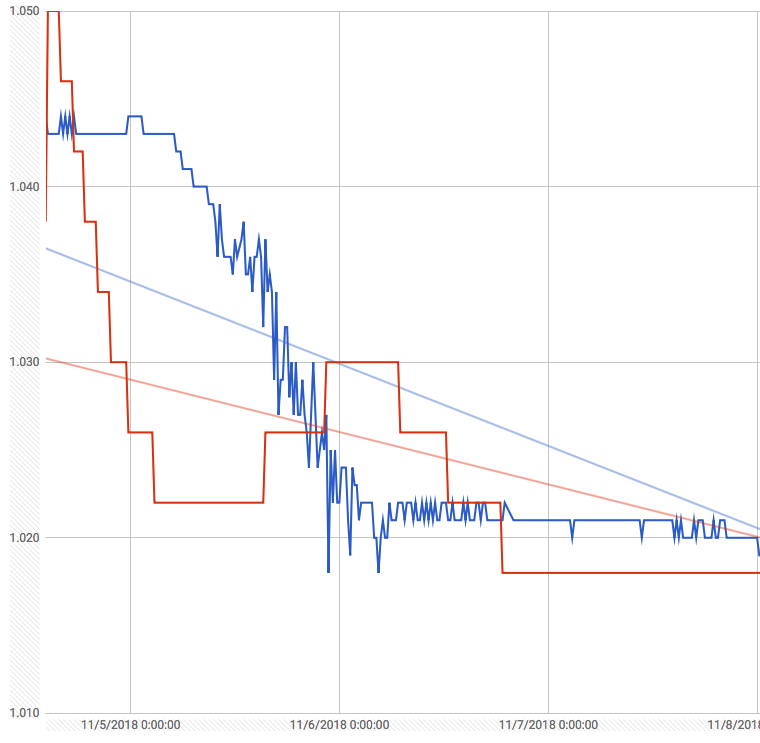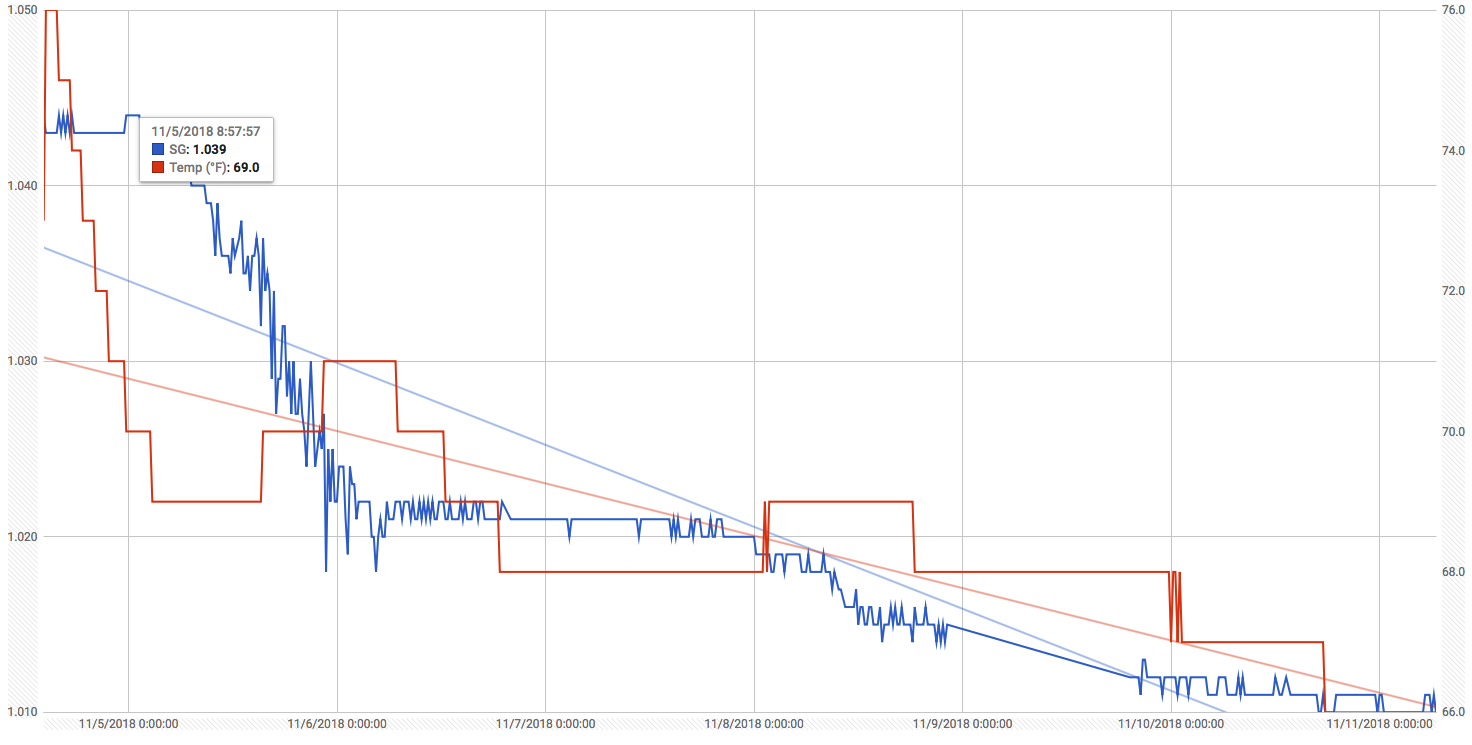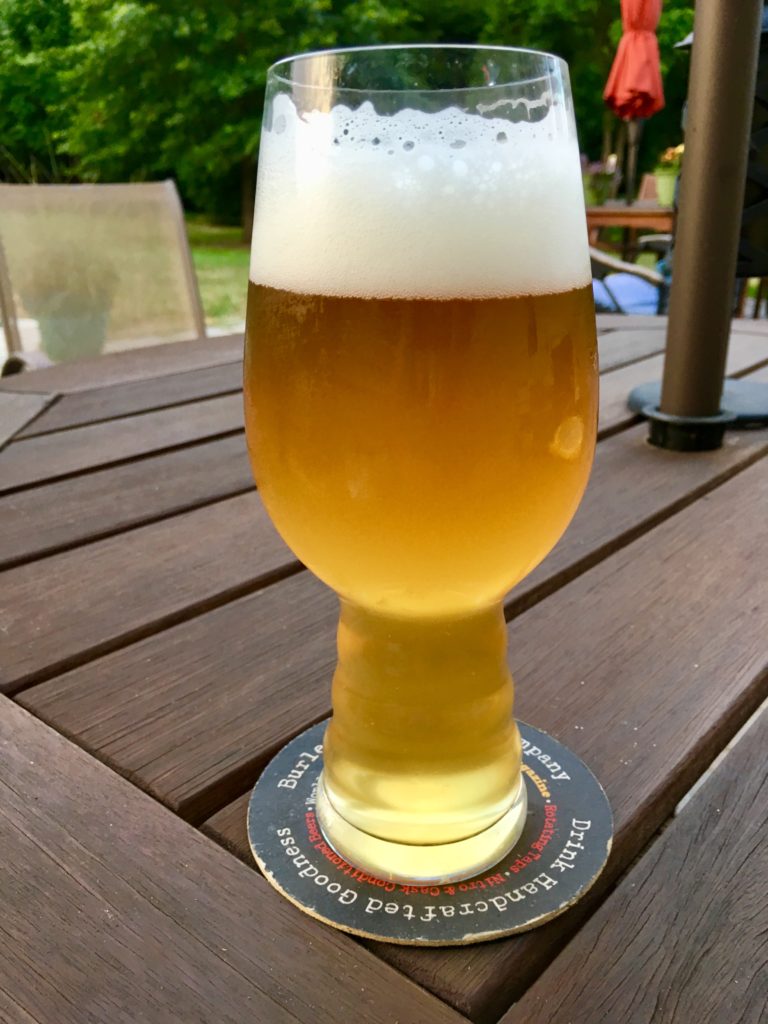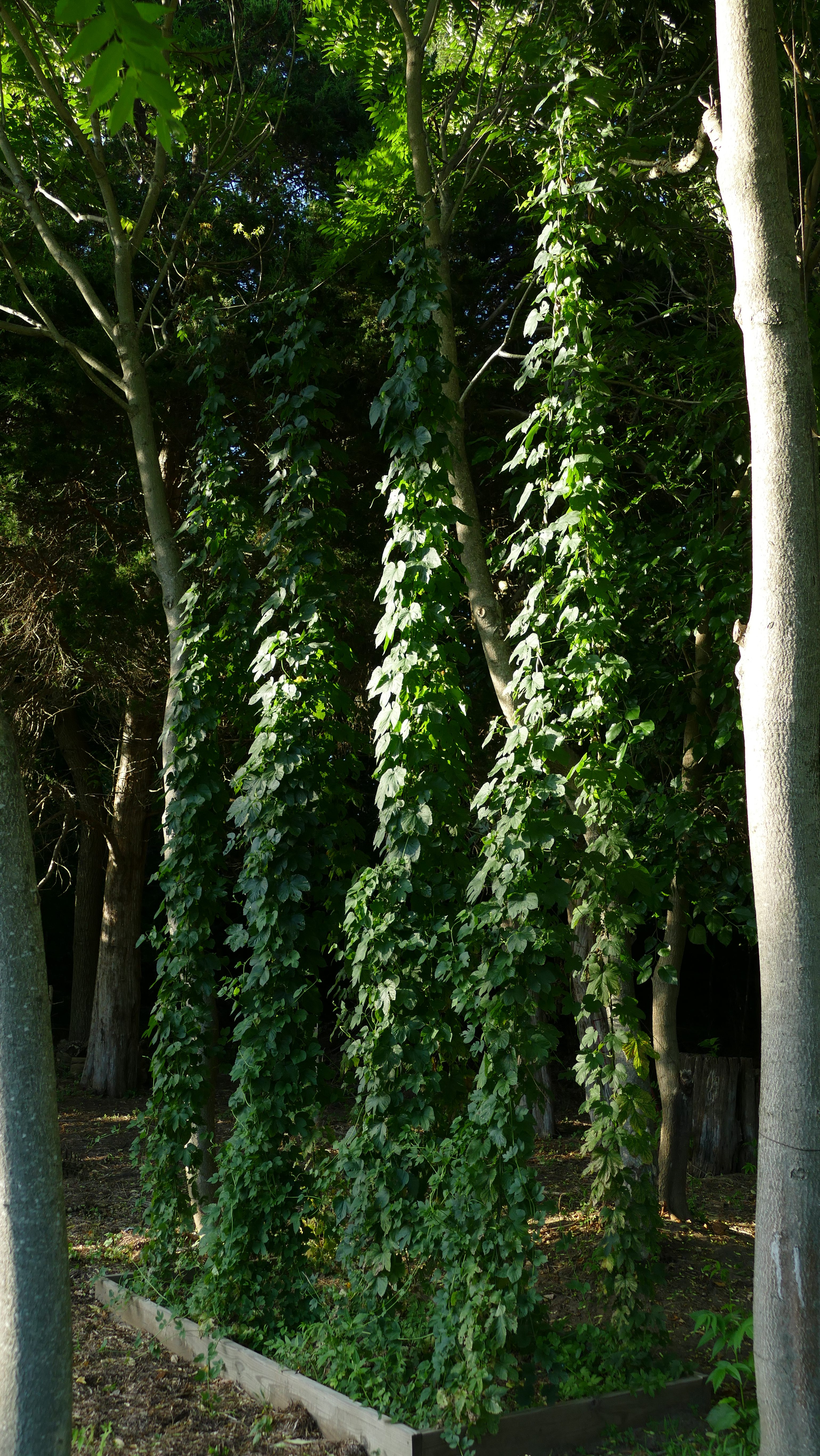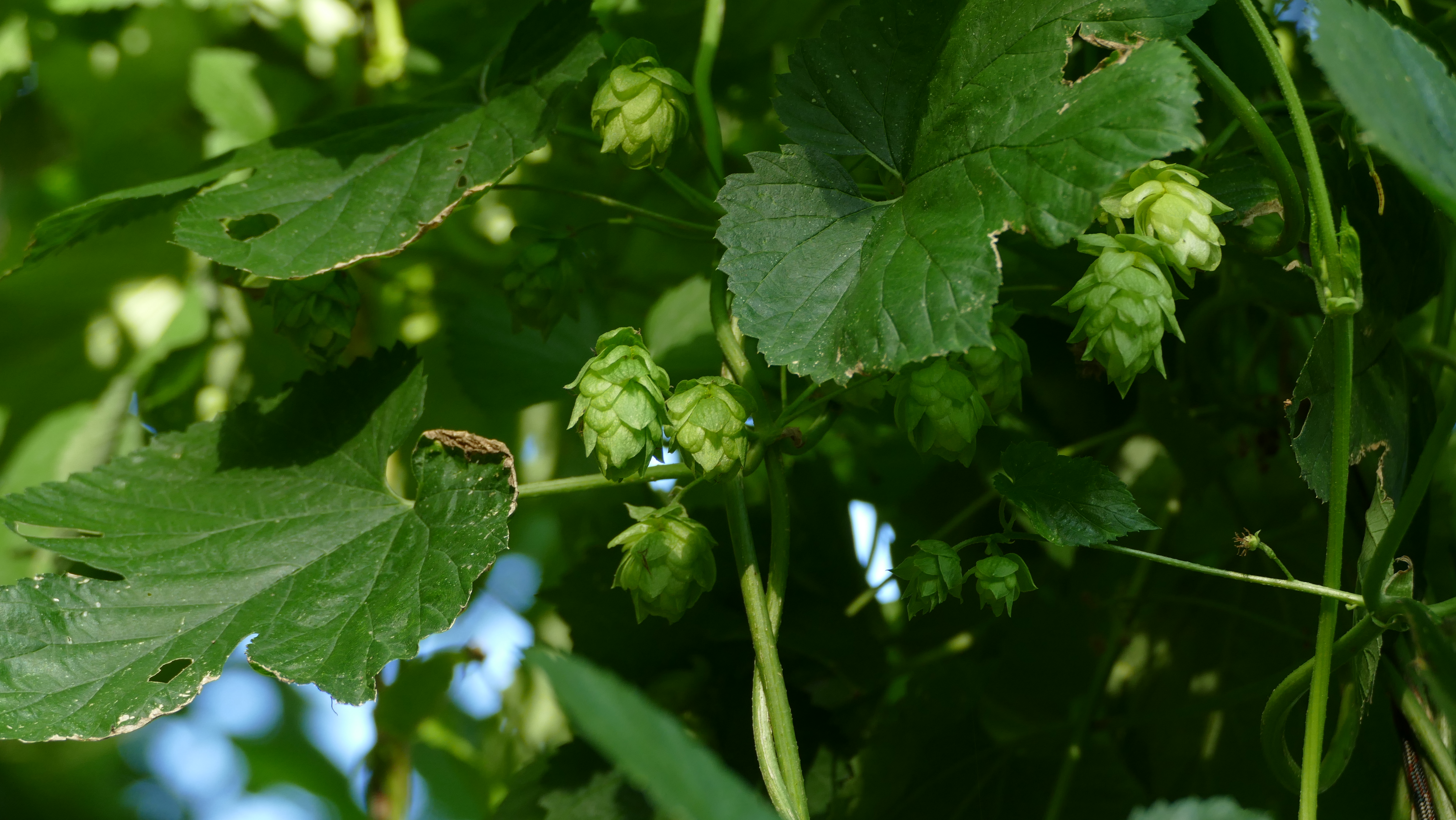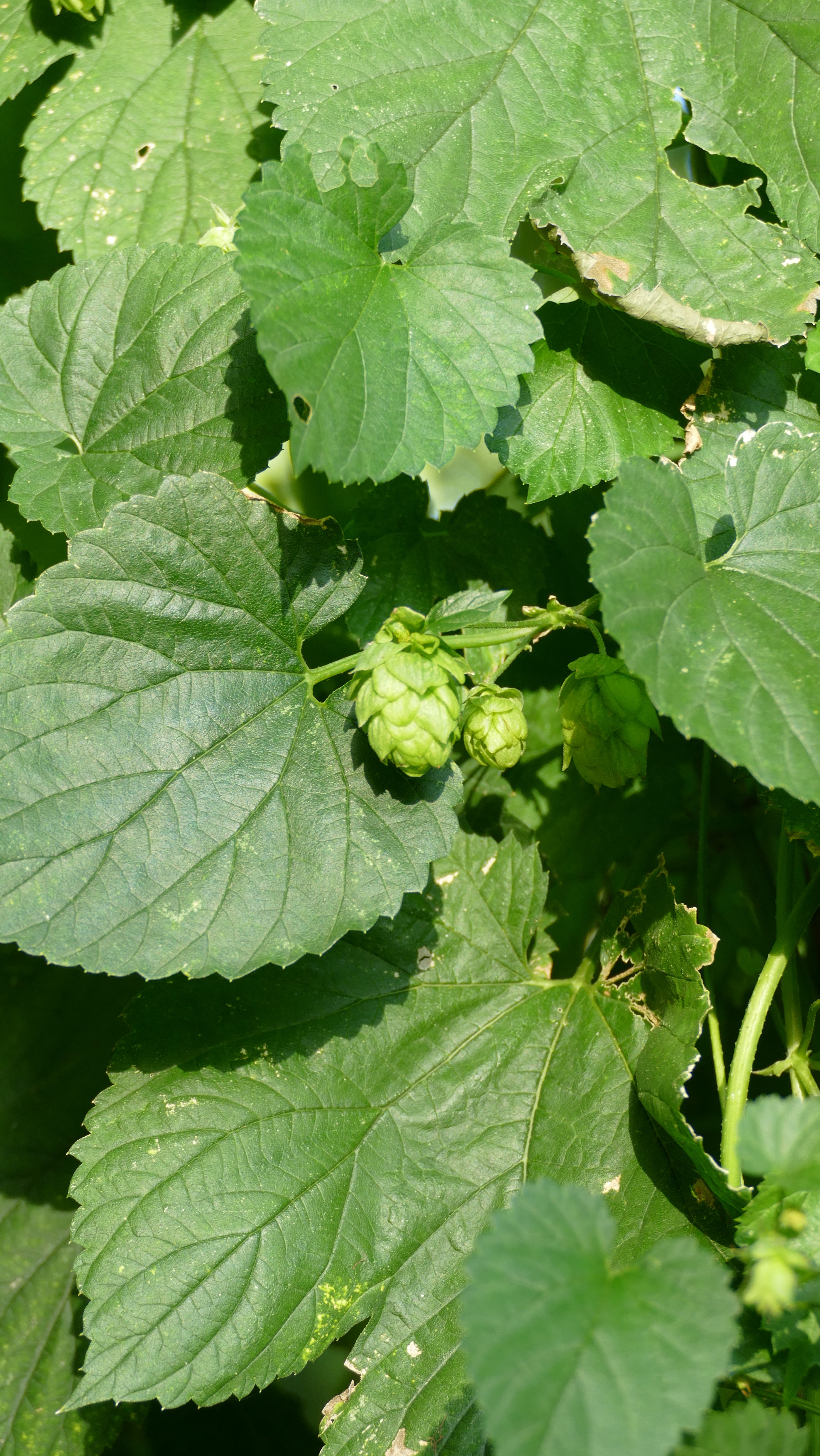As I stated in my previous article I submitted two beers for the National Homebrew Competition. I didn’t make it past the first round, but that’s not really a surprise. Here’s the info on the Kolsch!
I had high hops for this beer mostly because I perceived previous versions to be highly drinkable and to style. If you are interested here is recipe:
Here are the judges score sheets
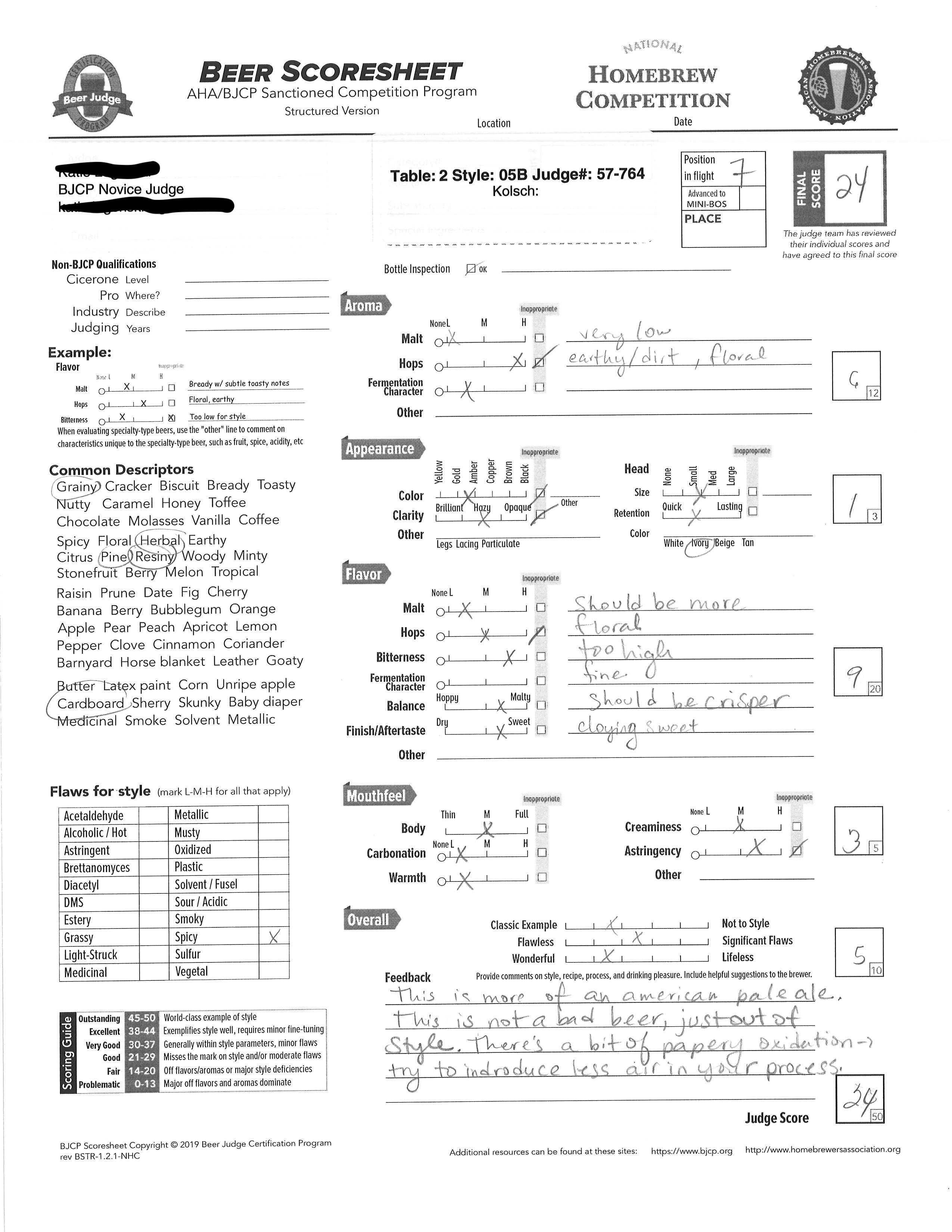

I find these comments very useful. A few are rather concerning to me and may point to problems in my process. Both judges noted the appearance was “hazy”, which certainly should not be the case a Kolsch. I suspect my beer had not been cold aged long enough before it was evaluated, or some issue occurred when I bottled it. This is what it looks like today (hazy it is not):

In some aspects the score sheets are contradictory. On one the finish is “cloying sweet” and the other “lingering bitterness”. One said the carbonation was low and the other between medium and high. One notes the malt character is too low and the other too high. It seem like they were trying different beers. Very strange. I submitted two bottles so I can only assume they each tried a different bottle and one was significantly different from the other. Maybe I did something wrong during the bottling process?
Anyway… an overall score of 24 means my beer is “good”. Not great. Not horrible… Just good. I’ll take that and hope to improve upon that score next time around.
-P
